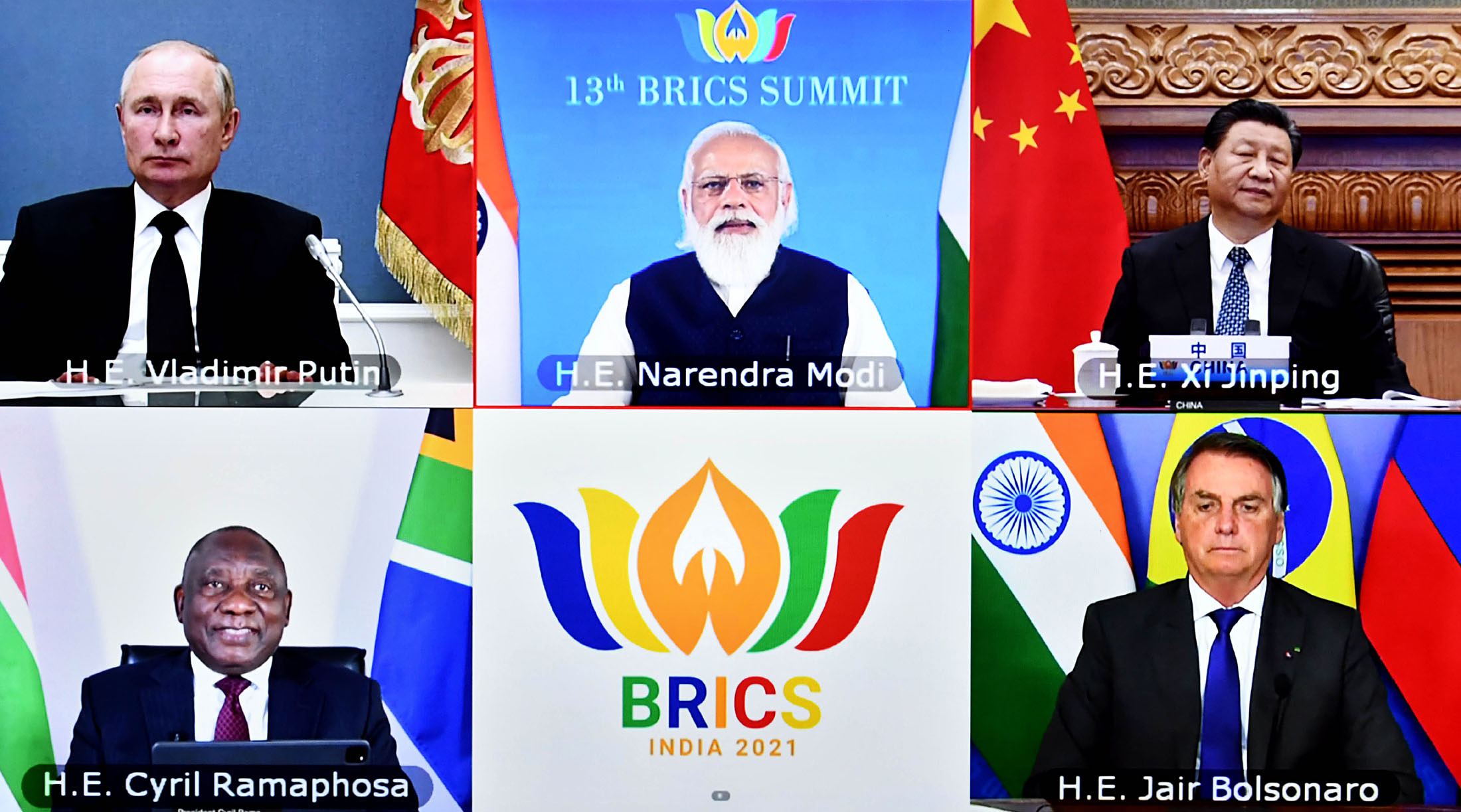A major concern is the ‘dragon in the room’, as China alone accounts for 75% of GDP of BRICS economies and over 80% of intra-BRICS trade.
The rise of BRICS economies has captured attention in the emerging world order. It is considered as the most credible intergovernmental cooperation as a potential riposte to the G7 orthodoxy—a bloc of seven advanced economies comprising the United States, Japan, Germany, France, the United Kingdom, Italy and Canada. Initially, termed “BRIC”, it is an acronym for the big emerging markets of Brazil, Russia, India and China. It was coined by Jim O’Neil, Chief Economist at Goldman Sachs in 2001 reflecting on their present and future economic potential. South Africa joined the grouping in 2010, thus adding the ‘S’ to BRICS.
The group comprises 3.2 billion people or 42% of the global population. BRICS economies account for 27% of the global GDP, 18% of global trade, and over 50% of global economic growth. In 2014, BRICS countries established the New Development Bank (initially termed as the BRICS Development Bank) as a multilateral development bank aimed at mobilising resources for infrastructure and sustainable development projects in BRICS and other emerging and developing countries.
The New Development Bank (NDB) is often considered as an alternative to the IMF and World Bank. Although it does not have the deep pockets to match these Bretton Woods institutions, with just $50 billion capital contributed by the BRICS nations to the tune of $10 billion each. Nonetheless, signalling is key here as there now exists a parallel financial institution in the world. Bangladesh, UAE, Egypt and Uruguay joined the bank as new members, thus firmly positioning the bank as an important global financing mechanism for developing economies.
Last month, Brazilian President Lula, on his visit to China, hailed the NDB as the “great bank of the Global South”. He called for creating a trading currency within the BRICS similar to the Euro created by Europeans and said that this could help reduce the dependence of the developing countries on the US dollar. Thus creating an alternative to dollar hegemony, which is used in 84.3% of cross-border trade and 59% of global foreign exchange reserves. While the idea is in its infancy, this is promoting the “de-dollarization” of the global economy.
The BRICS countries have convergent views on several issues, foremost being to create an economic and trade mechanism outside the Western bloc’s sphere of influence that ensures stability and security of BRICS and other like-minded developing countries. In so doing, BRICS appears as a beacon of light to counter the continued marginalization of developing countries within the various western led institutions of global governance such as IMF, UN, WTO etc. Recently, 19 countries expressed their interest in joining BRICS, which reflects on the rising legitimacy of this group. Countries such as Saudi Arabia, UAE, Iran, Indonesia, Egypt, Argentina, Mexico and Nigeria among others are seeking BRICS membership.
Another area of convergence has been the lack of explicit condemnation of Russia’s invasion of Ukraine by Brazil, India, China and South Africa. On the contrary, their trade with Russia is on the rise, with these countries not taking part in the sanctions against Russia as dictated by the West. The concern however is to move BRICS beyond the usual annual meetings and diplomatic talk shop and offer substantial outcomes lest its relevance might be diluted by similar multilateral forums, be it G20, SCO, RCEP, etc. BRICS has the potential of being the foremost geopolitical rival to the G7 bloc, however divergences remain. To begin with, the long standing border dispute between China and India has created a deep divide among the two powerhouses with significant geopolitical differences. Also China’s growing influence in the former Soviet bloc Central Asian nations challenges Russia’s dominance in the region. Another major concern being the “dragon in the room”, as China alone accounts for 75% of GDP of BRICS economies and over 80% of intra-BRICS trade. China’s economic and trade preponderance within the BRICS bloc could undermine the plausibility of other member nations. The fact that this may create a “China centric forum” suggests that developing countries might be moving away from the “sphere of influence of the West” (led by the US) to the “Chinese sphere of influence”.
For BRICS to be legitimate and relevant, it needs to focus on greater cooperation within member nations and among developing countries. Key focus should be on enhancing trade and investment, greater economic development, cooperation on new technologies, climate change, among others. The BRICS leaders’ summit in South Africa in August must discuss ways to forge and strengthen an inclusive, efficient and broadly representative global economic governance system. As the balance of power is evolving from “the West” to “the rest”. BRICS economies must seize this moment to rebalance and renew the world order in their favour with greater voice and equity for the Global South.
Dr Mohit Anand is Professor of International Business and Strategy at EMLYON Business School, France. Rajesh Mehta is a leading consultant and columnist working on market entry, innovation and public policy.

